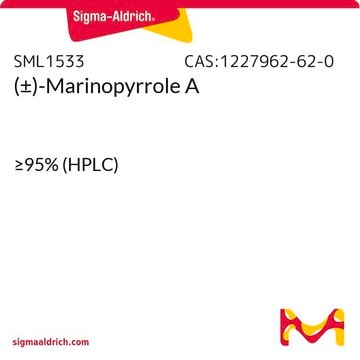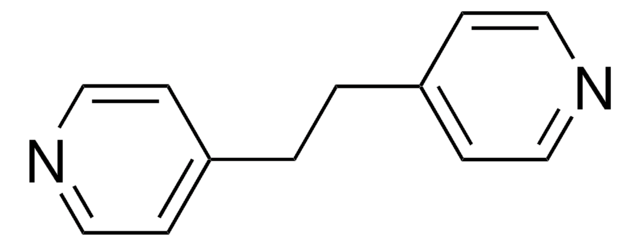143057
Aldrithiol™-4
98%
Synonym(s):
4,4′-Dipyridyl disulfide, 4,4′-Dithiodipyridine
About This Item
Recommended Products
Assay
98%
form
solid
mp
76-78 °C (lit.)
solubility
95% ethanol: soluble 5%, clear, colorless to light yellow
storage temp.
2-8°C
SMILES string
S(Sc1ccncc1)c2ccncc2
InChI
1S/C10H8N2S2/c1-5-11-6-2-9(1)13-14-10-3-7-12-8-4-10/h1-8H
InChI key
UHBAPGWWRFVTFS-UHFFFAOYSA-N
Application
- Aldrithiol™-4 was used as cosubstrate in a study to develop highly specific inhibitors against mannose-binding lectin-associated serine proteases by in vitro evolution technology:phage display.
- It was used to study the O2 equilibria of recombinant human neuroglobin and cytoglobin measured under close to physiological conditions.
- It was used to modify gold surfaces for protein studies.
Legal Information
Storage Class Code
11 - Combustible Solids
WGK
WGK 3
Flash Point(F)
Not applicable
Flash Point(C)
Not applicable
Personal Protective Equipment
Certificates of Analysis (COA)
Search for Certificates of Analysis (COA) by entering the products Lot/Batch Number. Lot and Batch Numbers can be found on a product’s label following the words ‘Lot’ or ‘Batch’.
Already Own This Product?
Find documentation for the products that you have recently purchased in the Document Library.
Customers Also Viewed
Our team of scientists has experience in all areas of research including Life Science, Material Science, Chemical Synthesis, Chromatography, Analytical and many others.
Contact Technical Service












